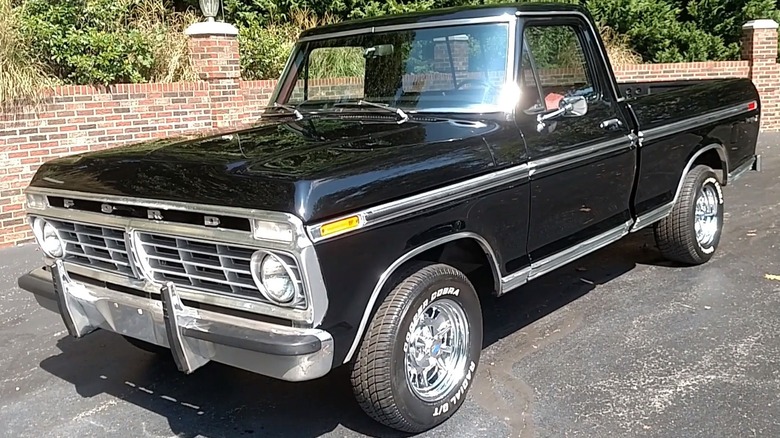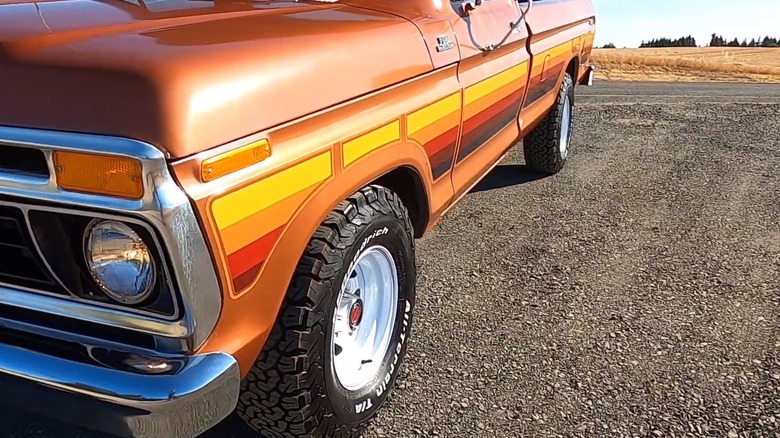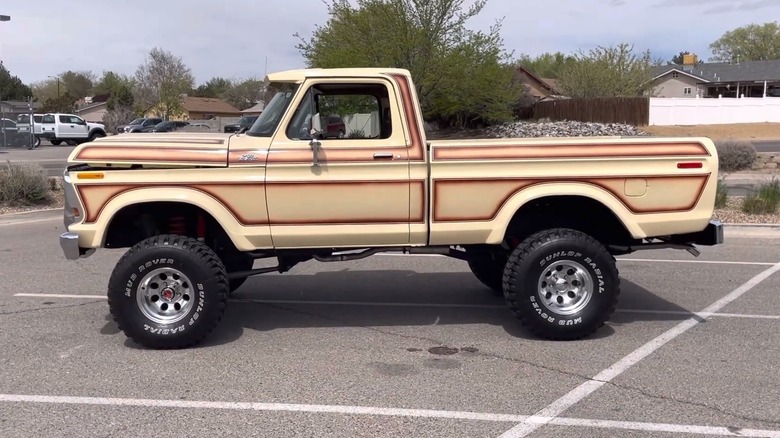Everything To Know About The 6th Generation Ford F-150
The first Ford pickup truck rolled out in 1917 with the Model TT, sparking an entire genre of vehicles still popular today. Over 100 years later, models like the extremely powerful 2024 Ford F-150 are a far cry from the humble truck beginnings overseen by automotive pioneer Henry Ford. With more than a century of pickups, there have been quite a few changes over the decades, with some iterations more impactful than others, making it easy to rank every generation of Ford's F-Series from worst to best. The 6th generation, in particular, made several modifications and became a product that directly reflected the times.
The sixth generation of the Ford F-Series ran from 1973 to 1979, giving way to enhanced interior options and reduced power. The OPEC oil shortage scare of the early '70s rattled the automotive manufacturers and the public, significantly influencing both design and purchasing decisions. Gasoline became more expensive during this time, affecting driving habits and prompting people to consider more fuel-friendly options. So, automakers like Ford needed to make their pickups more affordable and desirable. Unlike the '70s, today's conscientious buyers can research the best pickup trucks from every major brand without leaving the house.
The light-duty truck craze
Ford had been content to play it safe throughout the 1960s in terms of design, but saw an opportunity to capitalize on the growing popularity of '70s light-duty pickups. One of the available options for the 6th generation F-150 was the 'Free Wheelin' package. The 'Free Wheelin' version featured visual elements like bright yellow paint and sunset decals along the sides of the truck. Eye-catching colors and decals helped define the F-150 in the '70s as more than just a work truck; it was something that was fun, too.
Several trims, like the Custom, Sport Custom, Ranger, and Ranger XLT, provided buyers with a range of amenities. You could equip optional luxury add-ons like an air conditioner, Cruise-o-Matic Select Shift transmission, knitted vinyl seat trim, designer moldings, drip rails, and more. Ford wanted to attract buyers with fun designs and premium interior comforts unavailable on previous models.
Emissions and performance
In 1970, the Environmental Protection Agency (EPA) began setting auto emissions requirements, and these large V8 engines suddenly became problematic. The '70s forced the larger engines to compromise performance and accept unleaded fuel to be cleared for road travel. Automakers had to reduce compression ratios, which hurt power output. The engine technology hadn't caught up with the emissions standards, so the F-150 with a 351ci engine produced 160 hp but still managed a good amount of torque.
One of the most notable additions to performance for the F-150, specifically, was its enhanced towing and hauling ability. Ford developed a new suspension system with uprated shocks that provided better stability than the pickup had in the past. There were also adjustments made to the axles and springs, so that the F-150 could carry more weight in the bed, and pull heavier objects. With regard to power over the decades, Ford has been no stranger to lists regarding the most powerful pickup trucks ever built.


